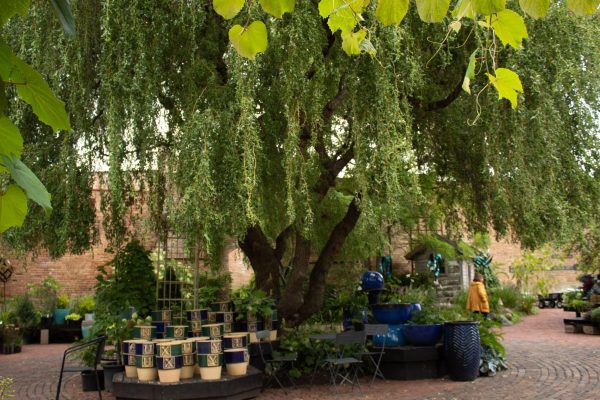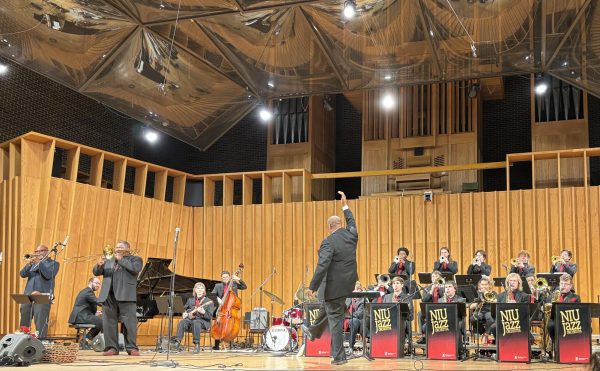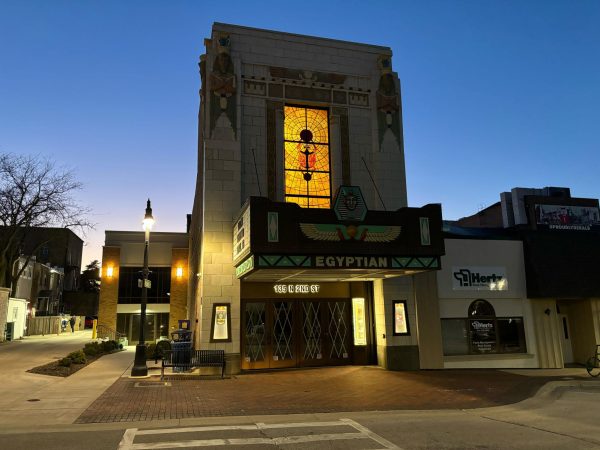Bolivian culture as alive today as in past
June 26, 2007
COCHABAMBA, Bolivia | We are sitting at the Cochabamba pub Dali on Friday night, drinking liters of Taquina beer and playing Liar’s Dice with Alejandro, a younger middle-class Bolivian who lives in a loft apartment with some friends, living it up “the Bolivian way.”
The wall behind us is bathed in red light, which allows us to see the numerous graffiti messages written behind us in Spanish, English, French and Arabic. An associate of Look Magazine comes around to distribute copies of their nightlife revista as we plan our next location, La Tirana, a discotech where the pole is actually for descent from the second floor, and the crowd doesn’t even get started until midnight.
“Somos lo que somos,” sings Alejandro, echoing a popular dance song. The scene is full of post-graduates and undergrads searching for good times while avoiding adult responsibilities, as well as looking for potential mates. This is the Bolivian culture at its most global, a mixture of pan-Latino and cross-Atlantic influences that does not fail to extend every opportunity for an adventurous good time.
Do not think, for a second, however, that Bolivia is only strong when it is modern. There are influences here that go back to before the Incan empire, when the Aymara lived in these hills and grew maiz along the Rio Rocha while it was still strong. These influences are still present; last week our academic director Ismael Saavedra welcomed us with a ko’a ceremony at his house, in which we gathered in a circle and gave thanks to Pachamama, or Mother Earth, by burning various grains and leaves, and pouring out wine on the ground.
This tradition is not a ritual alone; upon accidentally spilling my drink Alejandro laughs and says, “That’s for Pachamama.” We go back to his apartment and listen to Oscar, a guitarist who is about to leave for four years to study theory in France, as he plays Incubus on nylon-strings with fingers that have seen 11 years of classical training.
Meanwhile, Alejandro talks with his new sister Katie, a member of our SIT group, about their family lunch tomorrow. In Bolivia, as in many Latin American countries, lunch is the main meal of the day, in which the entire family leaves work to come and eat a hearty bowl of soup and an entree, complete with a basket of rolls called maraquetas, ideal at breakfast for their crunch factor but still good at lunch. My host family eats together every day at their house, bidding each other “provecho” before wandering off for a siesta or catching a bus to take care of business downtown.
Public transportation in Cochabamba is simple enough; one takes the Micro bus, taxi, or the Taxi Trufi, a car that drives on a fixed route. The Micro and the Trufi cost one Boliviano and 50 centavos per person per trip, and have neither creature comforts nor passenger limits. The driver stops, you fit yourself somewhere, and he continues, the entire process occurring in a rapid and bouncy flash. Red stoplights often serve only as yield signs, and cutting off other drivers is an accepted norm which somehow runs in harmony.
Many Bolivian families also own one or more cars. On Sunday morning my host mother drives her 22-year-old Volkswagen pickup to misa, or mass, which is obligatory for the 95 percent of Bolivians who are Catholic, although many do not practice. The 9 a.m. mass is preceded by a rosary prayer, said mostly by women who arrive early for this purpose. The cultural differences here are cosmetic; the liturgy uses song frequently, and the mass ends with extra prayers to the Virgin Mary, who occupies the entire wall to stage left of the altar. Some scholars link Bolivian Catholic devotion of Mary as syncretic with Pachamama, but if this is true, the link is not explicit.
My host mother and I leave the church and drive home, along the way passing a trio of dogs in the park eating abandoned food. In Cochabamba nearly everyone has at least one dog, and one can encounter strays along most streets, even those which will stand square in the middle of the road and stare down opposing traffic. It is considered inappropriate to pet any dogs because of the possible risk of rabies, and thus most dogs are stoic, until nightfall when they echo throughout the Cochabamba valley at 8,900 feet above sea level.
Next week we will ascend 3,000 feet more to La Paz, the city in which the Argentinian futbol team refuses to play because of the high altitude’s effects on respiration. There we will take a deep breath and begin hands-on training in documentary filmmaking.
Colin Leicht is a Northern Star writer spending part of his summer in Bolivia as an exchange student. He will be reporting weekly on his exploits from South America.










